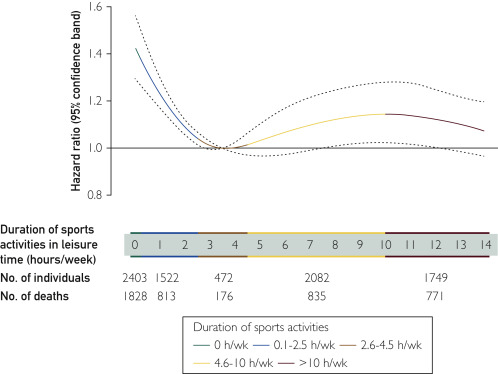
A medicine ball exercise is one of the best weight exercises that beginners can do. This exercise can help develop core strength, lower back strength, and shoulders. It requires only one dumbbell and should be done with your palms facing up. Hold the ball overhead and extend your arms as high as possible, pause at the top, and repeat the exercise. Three sets of 15 reps are required. With dumbbells, you can perform a similar exercise. Dumbbells make a great tool to improve grip strength as well as develop co-ordination.
You should warm up before you begin your free weight-loss workout. To avoid injury, it is important that you warm up before beginning your exercise routine. Warm-up exercises must be linked to a specific workout. Otherwise, the muscles might not adapt to the exercise. Warm-ups should only last a few seconds and it is essential that they are linked together.

It is a good investment to invest in a set free weights. A set four weights can be purchased for just $28. Once you have them, all you need is a few square feet of space and you can perform dozens of different exercises. Furthermore, they can be stored and are easier to conceal than an 8-foot tall Bowflex 3000. They can be used in multiple rooms, if there is enough space.
Free weight loss programs have many advantages. The first is the ability to customize the exercises to meet your specific needs. You can target your entire body with dumbbells, or any other weight. You can select the weight that is most suitable for you by changing the amount of dumbbells. This is a versatile exercise tool that can be used to alter the intensity of any given workout. Also, you can adjust the resistance.
Another benefit of free weights? They don't take up much room. It is important to keep in mind that free weight workouts are not for beginners. You must consult a fitness professional if you're unsure of which exercises will work best for you. By following the instructions carefully, you'll be able to get the most out of your workout. You will be amazed at the results and how many calories it can help you lose.

You can do a total-body workout at home with many different exercises. Dumbbells are an excellent option for building muscles in the lower body. These workouts target all major muscles groups. They're also great for those with limited time. This is the best option for busy people. If you are unable to use a machine, a dumbbell is an option. If you're worried about time, you can use a barbell.
FAQ
Why does our weight change as we get older?
How can you find out if your weight has changed?
A person who has less body fat than their muscle mass will experience weight loss. This means that daily calories should be less than daily energy. The most common cause of weight loss is decreased activity levels. Other reasons include poor eating habits, stress, hormone imbalances, certain medications and illness. When there is more fat than muscles, it's called weight gain. It occurs when people eat more calories than what they use in a given day. There are many reasons for this, including overeating and increased physical activity.
The primary reason we lose weight is that we consume less calories than what we burn. When we exercise regularly, we increase our metabolism rate which burns off more calories throughout the day. But this doesn't guarantee that we'll lose weight. All that matters is whether we're losing weight or gaining muscles. If we are burning more calories than what we eat, then we will lose weight. However, if we consume more calories than we burn, we end up storing them as extra fat.
As we age, we become less agile and don't move as often. We also tend to consume less food than when we were younger. Therefore, we tend to put on weight. We also tend to look larger because we have more muscle.
If you don't weigh yourself every week, it's impossible to determine how much weight has been lost. There are many methods to measure your weight. You can measure your waist, hips and thighs as well as your arms. Some people prefer to use bathroom scales while others like to use tape measures.
You can track your progress by weighing yourself at least once per week and measuring your waistline every month. To see how far you have come, you can take photos of yourself every few month.
Online measurements of your height and weight can help you determine your body mass. If you're tall at 5'10", and weigh 180lbs, your weight would be 180.
What is the best way to eat?
The best diet for you depends on several factors, like your age, gender, weight, health conditions, and lifestyle habits. Consider how much energy and low-calorie foods you consume, as well as whether or not you are a fan of fruits and vegetables.
Intermittent fasting might be an option for you if your goal is to lose weight. Intermittent fasting allows you to consume only certain meals per day, instead of eating three large meals. This might be better for you than traditional diets, which have daily calorie counts.
Some studies suggest that intermittent fasting may improve insulin sensitivity and reduce inflammation, which can lead to improved blood sugar levels and reduced risk of diabetes. Research suggests that intermittent fasting can promote fat loss and improve overall body composition.
What are 10 healthy behaviors?
-
Breakfast is a must every day.
-
Don't skip meals.
-
You should eat a balanced diet.
-
Drink plenty of water
-
Take care to your body.
-
Get enough sleep.
-
Avoid junk food.
-
Do some form of exercise daily.
-
Have fun
-
Make new friends
Is cold a sign of a weak immune response?
It is said that there are 2 types of people: those who love winter (and those who hate it). You may wonder why you feel so bad when it's cold, regardless of whether you love it or hate it.
The truth is that our bodies are built to work best when it's warm. Hot climates are where our food sources are most plentiful, and we evolved to thrive there.
We live in a very different environment than our ancestors. We spend more time indoors, are exposed to extreme temperatures (cold/heat), and eat processed food rather than fresh.
As a result, our bodies aren't used to such extremes anymore. This means that we feel tired, sluggish and even sick when we venture outside.
These effects can be reversed, however. Staying hydrated is one way to combat this. Hydration is key to keeping your body well hydrated, flushing out toxins and keeping your system healthy.
It is important to eat healthy foods. Eating nutritious foods helps your body maintain its optimal temperature. This is especially beneficial for those who spend extended periods of time inside.
Take a few minutes every morning to meditate. Meditation can help you relax your mind, body and soul. This makes it easier to manage stress and illnesses.
Why do we need to have a healthy lifestyle?
A healthy lifestyle will help us live longer and happier lives. A healthy diet, regular exercise, good sleep habits, and stress management will help prevent diseases like heart disease, diabetes, cancer, and stroke.
A healthy lifestyle helps us cope better when we are faced with everyday stresses. A healthy lifestyle can also help you feel and look younger.
What is the problem of BMI?
BMI is the acronym for Body Mass Index. It measures body fat based upon height and weight. The following formula is used to calculate BMI:
The weight of a kilogram divided by its squared height in meters.
The result is expressed as a number from 0 to 25. Scores between 0 and 25 indicate obesity. A score of 18.5 indicates overweight. A score of 23 indicates obesity.
A person of 100 kg with a height of 1.75m will have 22 BMI.
Statistics
- Extra virgin olive oil may benefit heart health, as people who consume it have a lower risk for dying from heart attacks and strokes according to some evidence (57Trusted Source (healthline.com)
- According to the 2020 Dietary Guidelines for Americans, a balanced diet high in fruits and vegetables, lean protein, low-fat dairy and whole grains is needed for optimal energy. (mayoclinichealthsystem.org)
- According to the Physical Activity Guidelines for Americans, we should strive for at least 150 minutes of moderate intensity activity each week (54Trusted Source Smoking, harmful use of drugs, and alcohol abuse can all seriously negatively affect your health. (healthline.com)
- In both adults and children, the intake of free sugars should be reduced to less than 10% of total energy intake. (who.int)
External Links
How To
What does the meaning of "vitamin?"
Vitamins are organic compounds found naturally in food. Vitamins help us absorb nutrients from foods we eat. The body cannot make vitamins; therefore, they must be obtained from food.
There are two types vitamins: water soluble or fat soluble. Water-soluble vitamins dissolve readily in water. Examples include vitamin C,B1 (thiamine), B2 (riboflavin), B3 (niacin), B6 (pyridoxine), folic acid, biotin, pantothenic acid, and choline. The liver and fat soluble vitamins are stored within the liver and in fatty tissue. Vitamin D, E, K and A are some examples.
Vitamins can be classified by their biological activity. There are eight major categories of vitamins.
-
A - essential for normal growth and maintenance of health.
-
C is important for nerve function and energy production.
-
D - Essential for healthy teeth and bones.
-
E - Required for good vision & reproduction
-
K - Essential for healthy muscles and nerves.
-
P - essential for strong bones, teeth and tendons
-
Q – aids digestion of iron and iron absorption
-
R – Required for the formation of red blood vessels.
The recommended daily allowance (RDA) of vitamins varies depending on age, gender, and physical condition. The U.S. Food and Drug Administration, (FDA), sets the RDA value.
For adults aged 19 and older, the RDA for vitamin B is 400 micrograms daily. However, pregnant women need 600 micrograms per day because it is important for fetal development. Children ages 1-8 require 900 micrograms per day. Infants under one year of age require 700 micrograms per day, but this amount decreases to 500 micrograms per day between 9 months and 12 months of age.
Children ages 1-18years who are obese need 800 micrograms per day while those who are overweight need 1000 micrograms per day and children who are underweight need 1200 micrograms per day to meet their nutritional needs.
2200 mg of vitamin A per day is required for children aged 4-8 who have been diagnosed by anemia.
2000 micrograms is the minimum daily intake for adults over 50 years old to maintain good health. Women who are pregnant or breastfeeding need 3000 micrograms per day due to increased nutrient requirements.
1500 micrograms are required daily by adults over 70 because they lose approximately 10% of their muscle each decade.
Women who have been pregnant or are lactating require more than the RDA. Pregnant and breastfeeding women require 4000 micrograms each day during pregnancy and 2500 Micrograms each day after delivery. Breastfeeding mothers need 5000 micrograms per day when breast milk is being produced.